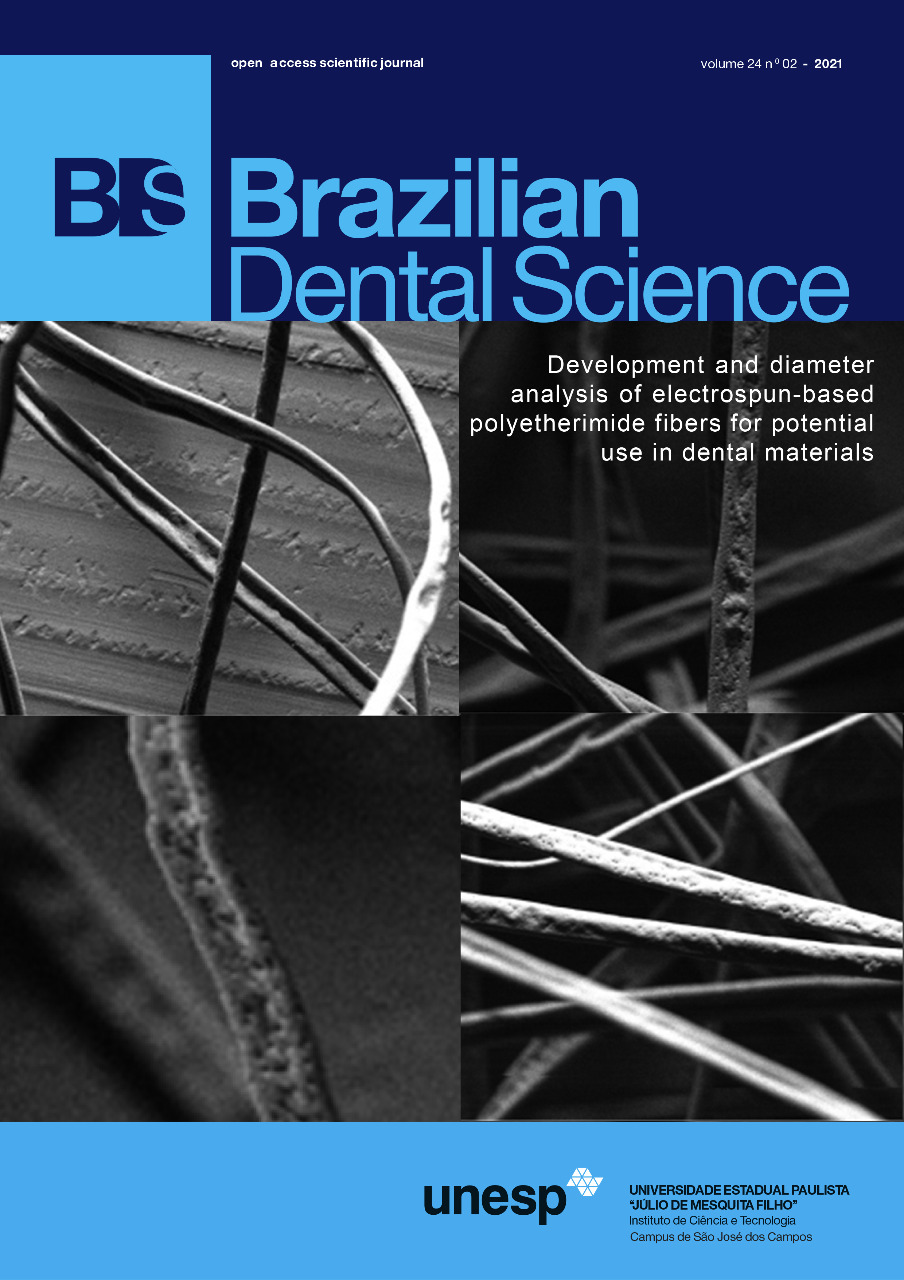Effect Of Chitosan Treatment On Shear Bond Strength Of Composite To Deep Dentin Using Self-Etch And Total-Etch Adhesive Systems
DOI:
https://doi.org/10.14295/bds.2021.v24i2.2440Abstract
Objective: To assess the shear bond strength (SBS) of resin composite to deep dentin, using 1 and 2.5% chitosan pretreatment as well as different adhesive systems. Material and Methods: 80 human maxillary molars were randomly divided to eight groups according to the type of adhesive system and dentin pretreatment (n = 10): I) two-step self-etch system (Clearfil SE bond); II) two-step etch-andrinse system (Adper single bond 2); III) 2.5% chitosan + Clearfil SE bond; IV) 2.5% chitosan +etch + Adper single bond 2; V) etch + 2.5% chitosan + Adper single bond 2; VI) 1% chitosan + Clearfil SE bond; VII) 1% chitosan + etch + Adper single bond 2; VIII) etch + 1% chitosan + Adper single bond 2 (chitosan solution (w/v): 2.5 g and 1 g of chitosan (Sigma Aldrich, USA) was dissolved in 100 ml of 1% acetic acid). Plastic molds were positioned on dentin and filled with composite (Z350, 3M ESPE, USA). SBS (MPa) was tested using a universal testing machine. ANOVA tests, Tukey’s test, and independent t test were used to analyze data (p < 0.05). Results: The highest SBS value among self-etch groups was observed with 1% chitosan (p = 0.001). In the etch-and-rinse group, the SBS of 1% chitosan was significantly lower than the other groups. Chitosan treatment following acid etching led to higher SBS in comparison to when chitosan was applied before etching, with the significant difference in 1% concentration (p = 0.030). A predominance of mix fractures was observed in dentin. Conclusion: Improved dentin bond strength can be achieved through immediate dentin pretreatment with 1% chitosan in self-etch adhesive systems. Chitosan Pretreatment may not be advantageous for etch-and-rinse adhesive systems.
Keywords
Adhesive system; Chitosan; Deep dentin; Shear strength.
Downloads
Downloads
Published
How to Cite
Issue
Section
License
Brazilian Dental Science uses the Creative Commons (CC-BY 4.0) license, thus preserving the integrity of articles in an open access environment. The journal allows the author to retain publishing rights without restrictions.
=================




























